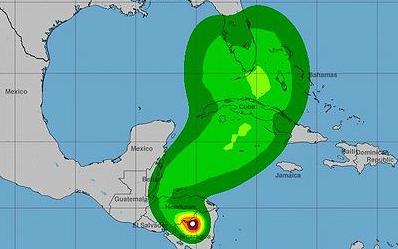
Some 150 are dead, with remote indigenous and campesino communities left stricken and without aid, a week after Hurricane Eta tore through Central America. Eta made landfall south of Puerto Cabezas, Nicaragua, as a Category 4 storm on Nov. 3. Two güiriseros, or artisanal gold-miners, were among the first killed, as a landslide inundated the mining camp of Tigre Norte in Bonanza municipality of Nicargua’s North Caribbean Coast Autonomous Region. Far worse was to follow in Guatemala, where officials have called off the search for dozens believed to have been buried when a mountainside collapsed, engulfing the hamlet of Queja. Ovidio Choc, mayor of San Cristobal Verapaz municipality, said the site of Queja will probably be declared a cemetery. Elsewhere in Guatemala’s Maya Highlands, villagers have had to mobilize their own rescue and recovery efforts, effectively abandoned by the government.
At least 20 lives were lost in the southern Mexican state of Chiapas, with the municipalities of El Bosque, Oxchuc and Mitontic especially hard hit. Ten bodies were found washed up on a riverbank in the village Chenalhó. (La Prensa, Environment News Service, The Weather Channel, Tico Times, The New Humanitarian, Reuters)
Meanwhile, at least six people are dead and 10 others are missing after Typhoon Vamco made landfall in the Philippines Nov. 11. More than 180,000 people were evacuated as the typhoon battered the country, striking many of the same communities that were devastated by Super Typhoon Goni just 10 days before. (CNN)





Climate-linked devastation in Philippines —again
At least 137 people are dead after Tropical Storm Megi hit parts of the Philippines. Known locally as Agaton, the storm slowed to a near standstill after making landfall, amplifying damages. Megi struck parts of the country still recovering from December’s Typhoon Rai, one of the country’s most damaging on record. (TNH)